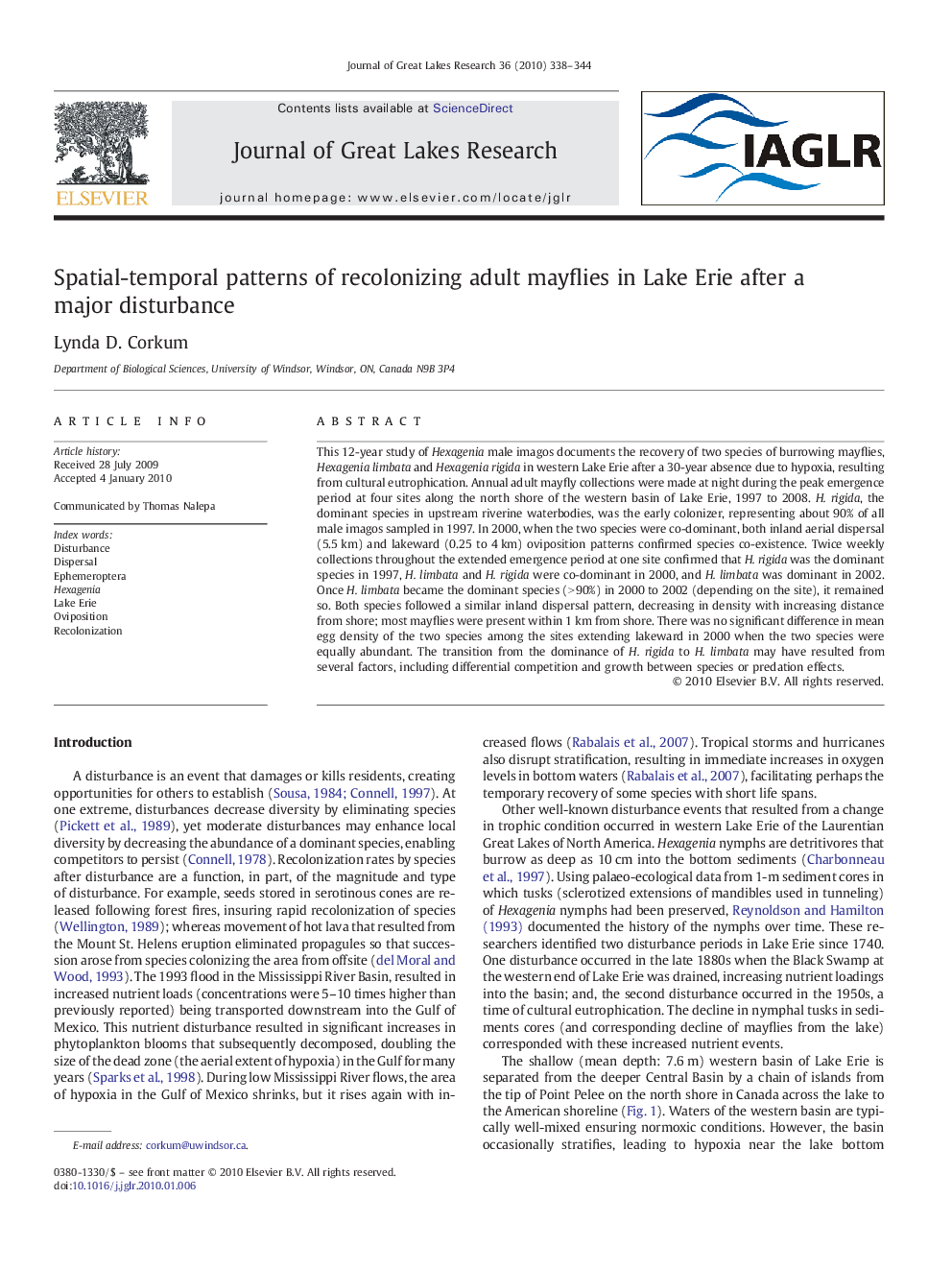| کد مقاله | کد نشریه | سال انتشار | مقاله انگلیسی | نسخه تمام متن |
|---|---|---|---|---|
| 4399205 | 1306723 | 2010 | 7 صفحه PDF | دانلود رایگان |
عنوان انگلیسی مقاله ISI
Spatial-temporal patterns of recolonizing adult mayflies in Lake Erie after a major disturbance
دانلود مقاله + سفارش ترجمه
دانلود مقاله ISI انگلیسی
رایگان برای ایرانیان
کلمات کلیدی
موضوعات مرتبط
مهندسی و علوم پایه
علوم زمین و سیارات
علوم زمین و سیاره ای (عمومی)
پیش نمایش صفحه اول مقاله

چکیده انگلیسی
This 12-year study of Hexagenia male imagos documents the recovery of two species of burrowing mayflies, Hexagenia limbata and Hexagenia rigida in western Lake Erie after a 30-year absence due to hypoxia, resulting from cultural eutrophication. Annual adult mayfly collections were made at night during the peak emergence period at four sites along the north shore of the western basin of Lake Erie, 1997 to 2008. H. rigida, the dominant species in upstream riverine waterbodies, was the early colonizer, representing about 90% of all male imagos sampled in 1997. In 2000, when the two species were co-dominant, both inland aerial dispersal (5.5Â km) and lakeward (0.25 to 4Â km) oviposition patterns confirmed species co-existence. Twice weekly collections throughout the extended emergence period at one site confirmed that H. rigida was the dominant species in 1997, H. limbata and H. rigida were co-dominant in 2000, and H. limbata was dominant in 2002. Once H. limbata became the dominant species (>Â 90%) in 2000 to 2002 (depending on the site), it remained so. Both species followed a similar inland dispersal pattern, decreasing in density with increasing distance from shore; most mayflies were present within 1Â km from shore. There was no significant difference in mean egg density of the two species among the sites extending lakeward in 2000 when the two species were equally abundant. The transition from the dominance of H. rigida to H. limbata may have resulted from several factors, including differential competition and growth between species or predation effects.
ناشر
Database: Elsevier - ScienceDirect (ساینس دایرکت)
Journal: Journal of Great Lakes Research - Volume 36, Issue 2, June 2010, Pages 338-344
Journal: Journal of Great Lakes Research - Volume 36, Issue 2, June 2010, Pages 338-344
نویسندگان
Lynda D. Corkum,